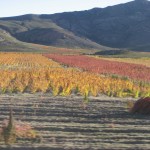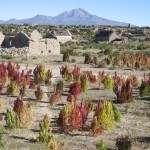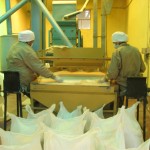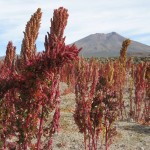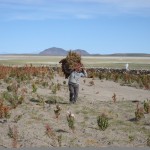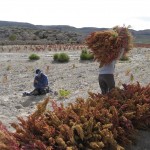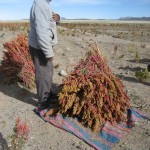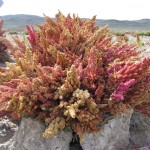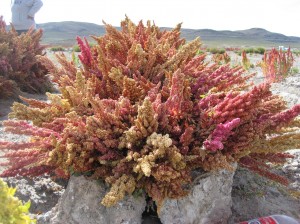 A story from The Guardian discusses how increasing global demand for quinoa (a grain-like superfood) has brought riches as well as problems for producers in Bolivia and Peru. On the upside, the tripling of quinoa prices has given some of the poorest farmers in South America a badly needed source of income. On the downside, demand from abroad has also sparked local land conflicts and could threaten local food security. What amazes me about this story is how quickly the tables can turn. In 2007, I wrote about Bolivia’s struggling quinoa farmers in an article titled, “Pachamama Goes Organic: Bolivia’s Quinoa Farmers” (photo gallery below). Back then, the country’s main quinoa-growers’ association (Anapqui) was desperately trying promote the so-called “caviar of the Andes”—nationally and internationally. The market, as Karl Kautsky once noted, “proved to be even more moody and unpredictable than the weather,” but “at least the weather’s perfidiousness could be prepared for.”
A story from The Guardian discusses how increasing global demand for quinoa (a grain-like superfood) has brought riches as well as problems for producers in Bolivia and Peru. On the upside, the tripling of quinoa prices has given some of the poorest farmers in South America a badly needed source of income. On the downside, demand from abroad has also sparked local land conflicts and could threaten local food security. What amazes me about this story is how quickly the tables can turn. In 2007, I wrote about Bolivia’s struggling quinoa farmers in an article titled, “Pachamama Goes Organic: Bolivia’s Quinoa Farmers” (photo gallery below). Back then, the country’s main quinoa-growers’ association (Anapqui) was desperately trying promote the so-called “caviar of the Andes”—nationally and internationally. The market, as Karl Kautsky once noted, “proved to be even more moody and unpredictable than the weather,” but “at least the weather’s perfidiousness could be prepared for.”
My article also tied in Bolivia’s growing geopolitical relationship with Venezuela and Cuba. The narrative begins with some quinoa farmers trying to get funds from the government donated by oil-rich Venezuela, and while traveling in the remote region I was continually asked if I was a Cuban doctor (the island sends doctors abroad on humanitarian missions). The story also touched on quinoa’s political history in Bolivia and a GMO patent battle. The article’s nutshell paragraph:
Most of the Aymara and Quechua residents of the southern altiplano—the poorest region of South America’s poorest country—survive on the meager income provided by growing quinoa and herding llamas. Anapqui has worked to lessen this daily struggle for more than 20 years, and its efforts are beginning to pay off. Thanks to a sympathetic government and rising quinoa demand, the prospects for campesinos are beginning to look a little brighter.
Back when I first reported the story, there was even talk about including quinoa into school lunches as a way of increasing national demand, improving nutrition levels, and reviving Andean culinary traditions.
A few quotes from my article show how much has changed:
Indeed, the racist stigma within Bolivian society of quinoa as a third-rate “Indian” or “rural” food remains a hurdle in boosting domestic consumption. For centuries, quinoa languished as a subsistence crop in the countryside, with a small portion going to urban areas and Peru.
…
“Some leaders are really radical, classist, and combative, and they don’t want anything to do with government institutions, foundations, outside technicians, or engineers,” explains Soto. But with the election of President Evo Morales, who was born in a community near Challapata, many growers are finally willing to work closely with the government.
Most people agree that the quinoa industry still needs more help from the government in boosting domestic consumption, since the “culinary colonialism” initiated with the Spanish conquest has had lasting effects. Wheat and wheat flour imports have long dwarfed quinoa production, and Bolivians still consume much more rice, bread, and pasta than they do quinoa or other native grains.
…
But with demand outpacing worldwide supply, expanding Anapqui’s production capacity is the most urgent challenge, says David Schnorr, head of the U.S.-based Quinoa Corporation, one of Anapqui’s main buyers.
“The problem I see with building a larger market for quinoa in the United States is the availability of the product and the farming-processing infrastructure of the countries producing quinoa,” Schnorr says.
…
The debate surrounding ALBA [a regional integration effort led by Cuba and Venezuela] does not seem to bother most Anapqui members, who are happy to get more assistance, even if it comes without the promised new markets. And the ALBA funds—not to mention the Cuban-sponsored health and education programs—should help the southern altiplano’s socio-economic revitalization, which began with organic production in the 1990s.
Click on an image for gallery view:

